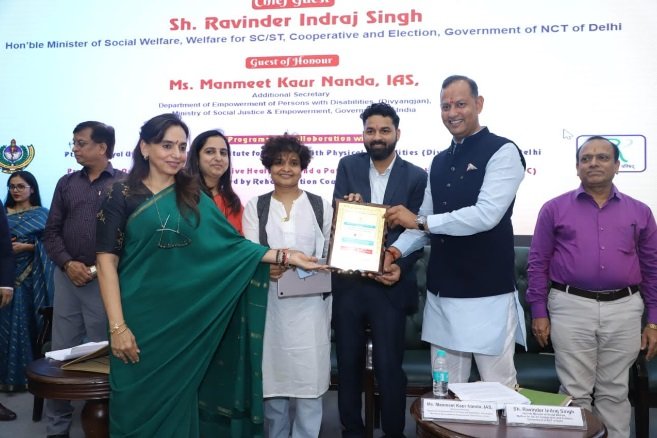Serendipity brought One and Three Quarters by Shrikant Bojewar, translated by Vikrant Pande, to your reviewer who, over the years, has found and loved books about cats. Most are Japanese, though there are scattered gems in the West, like Edgar Allen Poe’s memorable short story, “The Black Cat”. However, even Kathryn Hughes’ 2023 book, Catland: Feline Enchantment and the Making of the Modern World, is less about cats than about artist Louis Wain, whose anthropomorphic drawings of cats ushered in England a deep and widespread love for these enigmatic felines. Maybe the Egyptian hieroglyphics are cat stories, too. But nothing quite compares to Japanese books about cats: The Travelling Cat Chronicles by Hiro Arikawa, translated by Philip Gabriel, and The Guest Cat by Takashi Hiraide are as good as anything you will ever read.
Cats play a pivotal role in the narrative arc of Pitambar Langdya, the anti-hero of Bojewar’s charming novel. (Charming, observant and cunning… like a cat itself.) Langdya is a physically handicapped boy who has been in Class VII for three years running, living the slow life in his small Maharashtrian village. His language is coarse, he is bored by his tuition teacher (but not by the teacher’s wife’s bosom) and fears cats, particularly those who cross his path, an act that (to him) guarantees bad luck around the corner.
Langdya forges his own marksheet to avoid a beating from his father, a nightly drunkard at the local hooch den, but in the process learns of an affair between the school’s principal and a music teacher. This launches him on a life of blackmail. Well, actually, he becomes a broker, so therein lies the secret of being a successful “dalal”.
Also Read | ‘The Indian Cat’ is B.N. Goswamy’s ode to the feline mystique
Blackmail not only gets him his matriculation—a sad commentary on the fraud that poses as education in the Indian hinterland—but also inspires him to obtain publicity for the school through an unscrupulous journalist (another kind of broker). The boy starts getting noticed for his street-smarts, and ultimately catches the eye of the local MLA.
Keeping it light
Propelling the story forward is Langdya’s tryst with his teacher’s wife. The teacher’s loyal cat, Ghaari, who has been observing the boy and warning other cats about him, has a showdown with Langdya. A chain of events leads to Ghaari’s suitor, a tomcat named Latthya, discovering that he and Langdya can understand each other’s mewling and Marathi. Latthya helps Langdya blackmail his way up the ladder of success and fortune, and the two land up in Mumbai, the centre of power, where Langdya is no longer known by his cruel nickname but by his proper name, Pitambar. He has reached the top, thanks to a cat.
One and Three Quarters
By Shrikant Bojewar, translated by Vikrant Pande
Eka
Pages: 153
Price:Rs.399
But all things must pass. This very blackmailing derails Latthya; he witnesses a sex scene that reminds him of Ghaari, and soon the spell wears off—he and Pitambar can no longer communicate, and instead talk past each other incomprehensibly. Things no longer look up. It is in the last act that one learns the meaning of the novel’s title.
One and Three Quarters reads like a soft-porn version of R.K. Narayan’s Malgudi novels (though it is also true that The Guide, quite dark and different from the sunnier Dev Anand film, has its share of adultery and moral decay); it is not a long read and the 153 pages go by in a breeze. Langdya is quite the opposite of Swami: he is totally without morals or a spiritual compass, and only remembers his father’s piety when it suits him.

One and Three Quarters is a rollicking read.
| Photo Credit:
By Special Arrangement
The novel’s narrative is kind of like Kubrick’s film, Barry Lyndon (1975), set around the Seven Years’ War, in that the more Langdya climbs the social ladder, the murkier things get. Perhaps this is telling of India’s social-political development: that our wealth or our software engineers or our temple-building do not matter really because as a society we are still at par only with 18th century Europe.
The school principal’s affair with the music teacher seems quite harmless (especially since he is a lonely widower) compared to the MLA’s trysts with a local doctor at his farmhouse; though it is an open secret, it is exposed and leads to the MLA’s downfall when word of it gets to Mumbai in the middle of the Assembly election. This, in turn, seems harmless compared to the new culture minister’s trysts with a Hindi film actress. And even that seems harmless compared to the chief minister’s tryst with… well, one of his many trysts. At the centre of it all is Pitambar, the dalal who is called adviser, media manager, assistant, etc., but never “dalal”.
Also Read | Caracal: The mystery cat
An understanding of the swamp that is political, cultural and social Mumbai—where, as Latthya observes, not only do neighbours not talk to one another, but even people in the same flat do not talk—would put the recent Maharashtra Assembly election in perspective. The putrid election atmosphere in the novel is echoed in the real world, with the accusations and counter-accusations of bribery, corruption and nepotism.
Yet Bojewar, focussing on Langdya and his rural sensibility and his interaction with cats, keeps it light, avoiding the dreary heaviness that such an examination of the realities of Indian life could easily slip into. (Think of all the pessimism of Premchand.) That this is a translation inspires one to read more translations of Indian novels, which are certainly much better than the derivative literary writing in English. Read One and Three Quarters now; it is well worth your time.
Aditya Sinha is a journalist and author living in Gurugram.



